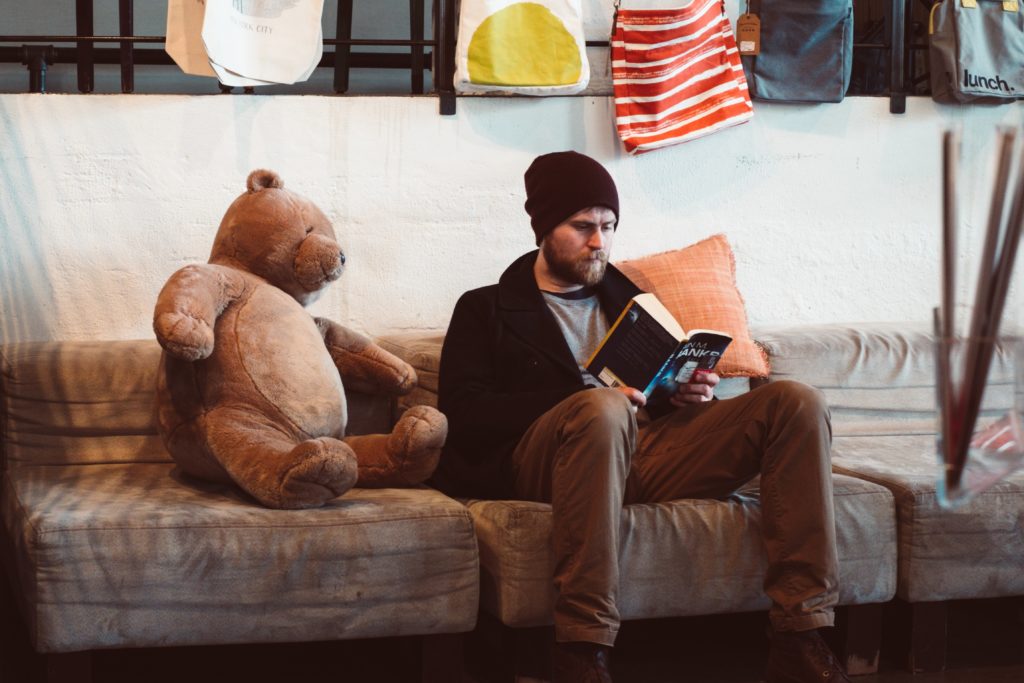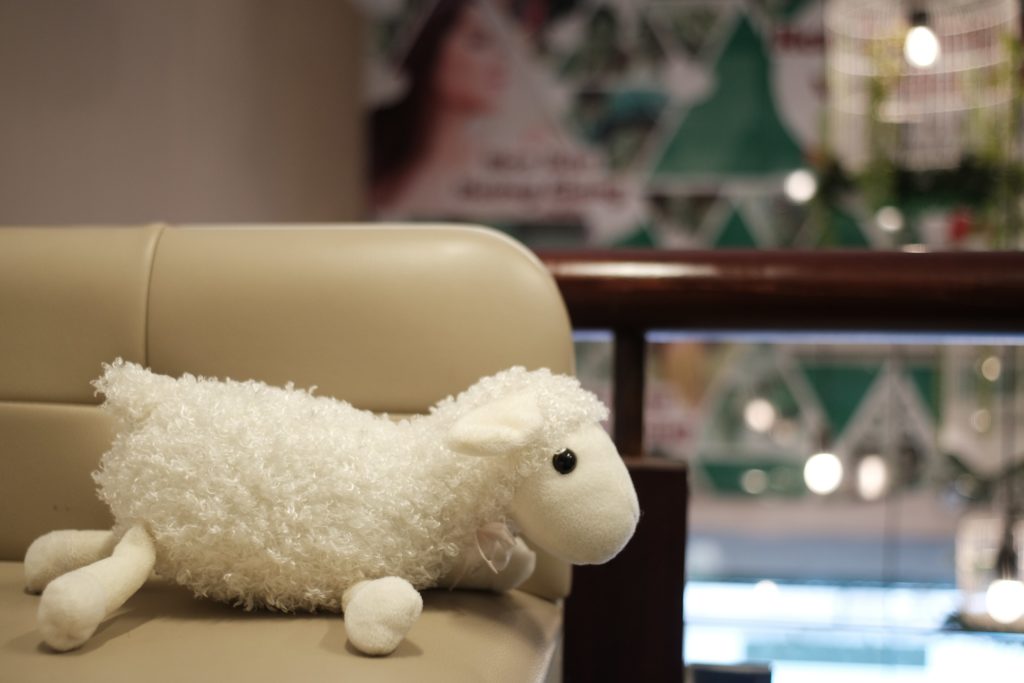Haz click aquí para leerlo en Español
By Inés van Berkel
From the moment we were born, sometimes even before, we were given all sorts of handy gifts: clothes, shoes, nappies, toys… But one in particular stood out: the teddy bear. It has become a symbol for childhood, and rarely will we see a child’s room without one. There’s many reasons as to why children are given soft toys; some say it’s a great item to help them sleep on their own, whilst others give it a more personal meaning explaining that not only does it provide comfort at nighttime, but it serves the function as a companion which’ll stimulate their imagination.
When scientists like Donald Winnicott refer to soft toys as transitional items they mean that they’re chosen possessions that offer security and comfort to a child during a transitional phase, such as the one of learning how to sleep on their own. Nevertheless, many children go beyond this meaning and use their transitional objects as instruments of self expression, including them in their playtime, giving them names, hobbies and their own personalities. They become much more than just a source of comfort.
The latter aspect of the teddy bear is the one that, like other toys, is burdened with an expiry date. As children grow up into teens and adults, their hobbies and the way they play changes, leaving those imaginative play scenarios behind. However, the toys themselves often remain in their lives. Whilst many parents will push the transitional object characteristics by asking their children ‘‘aren’t you a bit old for that now?’’ or ‘‘don’t you think it’s time to sleep on your own?’’, the truth is, that 1 in every 3 adults in the UK still sleep with soft toys, and half of US adults claim to still keep their childhood teddy bears. And that’s completely fine.
Transitional seems to imply an adjustment from one stage to another, in this case, stages of maturity. The child must learn to go from relying on their parents for emotional comfort to learning to find it within themselves, and the teddy bear is the transition between these two. But learning to become emotionally independent doesn’t necessarily have to mean getting rid of the items that help to get there, nor does it mean that one will never need emotional support again. The Vrije Universiteit of Amsterdam conducted a study in 2016 in regards to the Effects of Simulated Interpersonal Touch and Trait Intrinsic Motivation on the Error-Related Negativity, in simpler words, the effect that touching and interacting with inanimate objects can have on ourselves.
“Our findings show that even touching an inanimate object — such as a teddy bear — can soothe existential fears”
S. L. Koole, M. Tjew A Sin, I. K. Schneider. Embodied Terror Management: Interpersonal Touch Alleviates Existential Concerns Among Individuals With Low Self-Esteem
The study proved that while the benefits of touch may vary due to various factors, like which exact object one is touching, and the personal meaning it has, it’s certain that these items have soothing effects on both children and adults. And whilst the former seems to be socially accepted, the latter can still be met with confusion or even ridicule. But when we think about it, it makes perfect sense. We grow up with the knowledge that soft toys like teddy bears help soothe children, especially at night, why would we look down on those who maintain these beneficial practices throughout adulthood?
Anxiety amongst teens and adults has been at an all time high in recent years, considering that we’ve gone through a global financial crisis, recession, surge in nationalism and even a pandemic. But even on a personal level, it’s completely understandable for people to reach out to the habits and objects that make them feel safe and calm under times of stress. Going back to the VU Amsterdam study, we see that touching a soft toy can relieve existential angst, especially among those with low self-esteem, adding as well that these forms of touching can create a connection among people during periods of anxiety.

I spoke to various people of different ages, nationalities and backgrounds before writing this article and whilst everyone’s stories were different, a lot of them showed a pattern that relates back to the soft toys as transitional items, in a way. Whilst not representing a transition like the aforementioned with children learning to sleep on their own, one of the people I spoke to explained how when moving abroad for the first time, their anxiety was reaching new levels due to starting this completely new chapter of their life. It was during this moment that their partner gifted them a soft toy and it helped them in the sense of feeling accompanied and calm; it became a soothing companion for this new adventure.
Growing up, my collection of soft toys moved from the bed to the shelf and eventually, to the closet. Except for one or two toys that I’d eventually rescue and return to my bed during times of stress or loneliness. I never paid much importance to it, and of course, hid this aspect during my teenage years in fear of being seen as childish (every teens biggest nightmare). But as I grew older, and more responsibilities and anxieties came my way, I found myself reconnecting with these soft toys. I didn’t know how or why but having something to hold at night just felt good.
Still, like many others, I felt a sort of shame in relying on these ‘childish’ objects to sleep well, and wouldn’t take them with me when I travelled or moved abroad for short periods of time. I’d settle into my new room, like the independent adult I am, and would find myself cuddling a pillow or blanket at night almost instinctively. It’s something that I’m sure many others do as well, and maybe don’t want to accept due to this societal pressure on leaving behind our soft toys. But the comfort of holding something soft at night is still there, which is what has created the stress-relieving adult-focused weighted blanket phenomenon.
It wasn’t until my partner gifted me a little blue pig that I fully accepted these soft toys back into my life. It was something about this soft little plush that made me felt comfortable the nights that he was away. When I went away for work for 3 weeks without knowing anyone there, the pig came with and provided the comfort of being away from home. It reminded me of the place where I felt safe and provided the comfort I missed.

When speaking to other adults about their soft toys I got to know that for some, that special toy is nothing but the remaining drags of a childhood companion that has been with them practically since the day they were born. Meanwhile, others have opted for newer plushies, representing films or characters they love and some even with a particular smell included for a sensory and physical effect.
The reason behind why these items are so special and have such a positive function on people may come from association with a simpler time or a memory from home. Although for many, that reassuring, homely feeling comes with literature or films, making these a safe space to find comfort in times of stress. For others it might be a reminder of a loved one looking out for them, or simply a soft, cosy object to caress and cuddle in times of stress.
‘‘Interpersonal touch is such a powerful mechanism that even objects that simulate touch by another person may help to instill in people a sense of existential significance.”
S. L. Koole, M. Tjew A Sin, I. K. Schneider. Embodied Terror Management: Interpersonal Touch Alleviates Existential Concerns Among Individuals With Low Self-Esteem
Whatever the reason may be, the truth is that anxiety comes and goes, but having an inanimate companion that you can take anywhere and won’t ever judge you throughout the ups and downs provides comfort. Whether this be one of the brand new adult-focused weighted blankets, the rags of a childhood toy or the latest, softest form of merchandising. The item of choice can eventually become the transport to reaching that calming place, which at the end of the day, is the only thing that matters.























